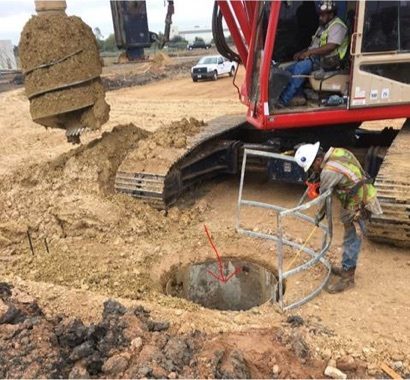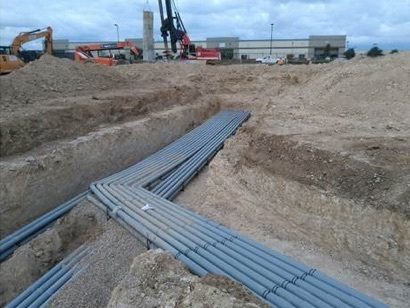
You may have heard about data centers being built in 3-6 months from groundbreaking to commissioning. You’ve probably also seen buildings that are retrofitted to be data centers. There are advantages to these types of data center construction projects – they’re fast and cheap, and companies that need data center space ASAP can move in quickly. However, as you can imagine, much is sacrificed in the way of security, resiliency and redundancy when data centers are put together in a hurry. We devote a large portion of our data center construction timeline to what goes in the ground, months before the slab is even poured.

Data Center Turned Upside Down – Underground Infrastructure
Part of the reason we devote so much time to underground work is because we are and have always been data center operators. Designing and building data centers from an operator’s point of view (rather than from a real estate or construction perspective) results in a hyper-focus on protecting and securing IT infrastructure. Designing a resilient and secure mission critical environment is our top priority. On the contrary, when quick build-outs are mandated, construction teams perform minimal work underground. Underground infrastructure and how it is designed plays a critical role in maximizing uptime and providing a safe and secure operating environment. We also ensure that our infrastructure is scalable so that we can increase the campus’ network and power capacity, should we ever need to.

Drilling for Foundation Piers
Designing the Underground
To begin a data center construction project, Data Foundry works with designers to create a model of the data center and its underground utilities using Building Information Modeling (BIM) technology, as shown in the images above. This allows us to visualize the development of underground infrastructure from any angle. Using this comprehensive model, our in-house construction team takes over and works with the model to ensure everything falls into place. We are currently in the midst of building Texas 2, our newest Austin data center. We are on schedule and have spent almost 3 months installing underground infrastructure — laying concrete-encased duct banks and conduits for telecom and electrical feeds, drilling down 25-30 feet for massive foundation piers and laying underground piping to bring chilled water to the data halls. We expect to pour the foundation later this month.
Here is what you’ll find under our data centers:

Underground Chilled Water Piping
Chilled Water Piping
In addition to hot and cold aisle separation and deep subfloor space, we utilize chillers to provide efficient cooling that can support high-density deployments. The blue and green piping in the BIM image above will transport cool water underground from the chillers and back up into the data halls. Having these pipes underground not only gives the facility a clean look, but it’s safer than having the pipes run overhead in the data center.
Electrical Duct Banks & Conduits
As shown in the BIM model, Texas 2 has underground electrical conduits that are fed by diverse underground, concrete-encased power feeds. These underground feeds are protected from power failure caused by storms, car accidents and squirrely squirrels. Basically, these duct banks minimize the possibility of downtime from unexpected incidents. Additionally, the duct banks’ concrete fill allows for more efficient dissipation of heat from the power cables and increases ampacity.

Underground Telecom Conduits
Telecom Duct Bank & Conduits
Similar to our power feeds, our purpose-built data centers are designed with diverse, concrete-encased telecom duct banks that run from our buildings to the edge of the property. This makes our data centers attractive locations for network providers to set up service. Unlike with most data centers, carriers will endure minimal cost and effort to set up service in our facilities since we’ve already done most of the underground work for them. Due to these efforts and our carrier-neutral mentality, we currently have over 16 carriers live on our campus and ready to serve customers when we open the doors for Texas 2. Making an attractive facility for carriers isn’t the only reason we do so much underground work. Just like with electrical work, we do so in an effort to minimize downtime.
Underground Fuel System
We build our facilities with underground fuel storage tanks and fuel piping to conveniently power our indoor generators. Underground fuel tanks allow us to store enough fuel on site to operate for days without electrical power. In the event we lose electrical power, tap boxes, fuel tanks and generators keep the facilities running without interruption.
If business continuity is a top priority when it comes to what you want from a data center provider, ask about the construction process and what’s underground. How well are the utilities protected? How is redundancy built in? By looking underground, you’ll get a better idea of the resiliency, security and redundancy a facility can provide.
